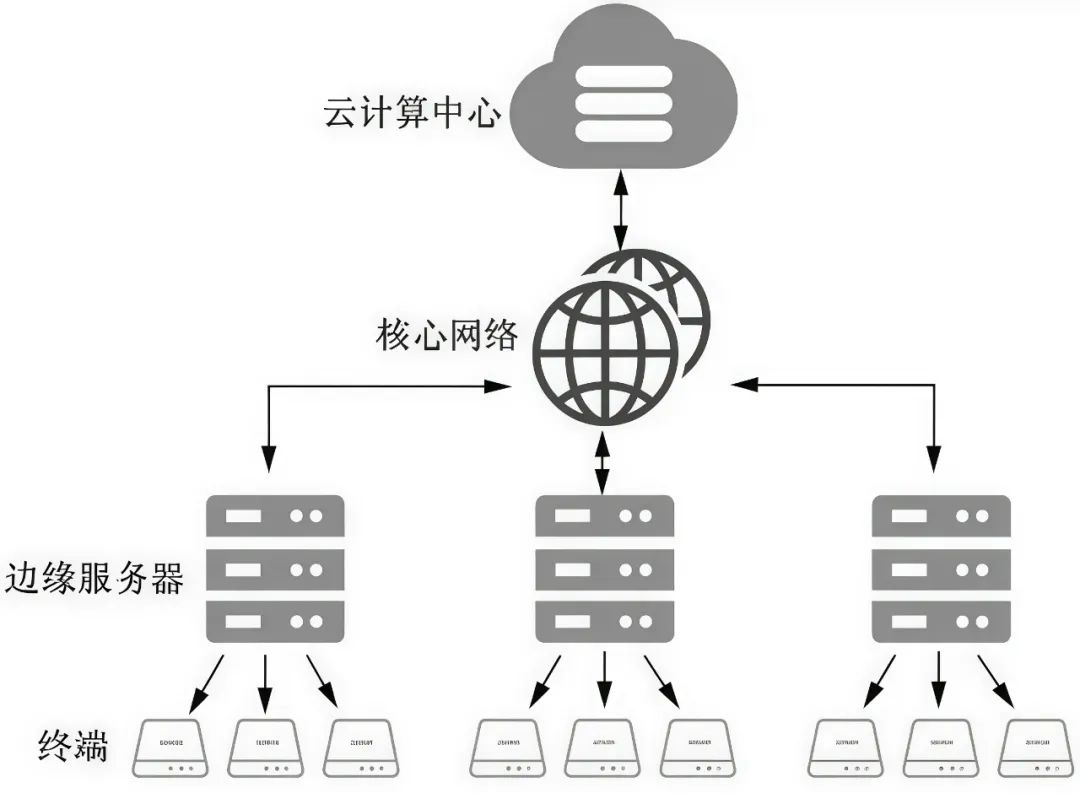

Empowering Real-Time Response and Decision-Making in Public Transport with Edge Computing Technology

Public transport informatization is developing towards a more intelligent direction. Edge computing, as a computing model, provides new technical support for public transport informatization, assisting public transport systems in achieving real-time response and decision-making, thereby enhancing operational efficiency and service levels.

1. Architecture and Advantages of Edge Computing

Edge computing refers to the decentralization of computing, storage, and networking resources from the cloud to the network edge, closer to the data source or user side, providing real-time and efficient data processing and services. The architecture of edge computing is divided into terminal layer, edge computing layer, and cloud computing layer, as shown in the architecture diagram below (image source: internet):



Compared to traditional cloud computing models, edge computing has the following advantages:
Low Latency: Data processing occurs at edge nodes close to the data source, reducing data transmission delays and meeting the real-time requirements of public transport systems.
Low Bandwidth: Edge nodes can process large amounts of data locally, alleviating network transmission pressure and improving data processing efficiency.
High Reliability: Edge computing can mitigate the impact of network interruptions on the system, enhancing system reliability and stability.
These advantages make edge computing an ideal choice for empowering real-time response and decision-making in public transport, effectively addressing issues of timeliness, bandwidth, and reliability faced in public transport informatization.

2. Applications of Edge Computing in Public Transport

Edge computing technology has broad application prospects in the field of public transport informatization, mainly reflected in the following aspects:
1. Vehicle Safety
Edge computing technology provides comprehensive protection for public transport safety through real-time data processing and low-latency response. In Advanced Driver Assistance Systems (ADAS), edge devices analyze camera data in real-time to complete lane departure warnings or automatic emergency braking, significantly reducing collision risks. It can also dynamically perceive driver behavior and work status, monitor and analyze facial features, and accurately identify fatigue or distracted driving, triggering localized warnings to support decision-making for safe operation.
2. Intelligent Dispatching
Edge computing significantly enhances the accuracy and efficiency of public transport intelligent dispatching through localized real-time data processing capabilities. In vehicle real-time positioning, onboard edge devices accurately locate vehicle positions and calculate arrival times. For managing distances between vehicles, it dynamically calculates the spacing and relative speed of adjacent vehicles, automatically coordinating speeds or triggering warnings when safe distances are insufficient. In response to sudden road conditions, it uses image recognition to monitor congestion, accidents, and other abnormal events in real-time, pushing optimal detour paths and conducting real-time dispatching. Additionally, edge computing supports multi-vehicle collaborative dispatching; when a vehicle malfunctions, the system automatically calculates the optimal connection path for surrounding vehicles, ensuring overall network stability. Through collaborative computing of distributed edge nodes, the public transport dispatch system achieves an intelligent upgrade from “passive response” to “proactive prediction.”
3. Cabin Occupancy Rate
Edge computing technology provides an efficient solution for real-time monitoring of bus cabin occupancy rates. In-cabin monitoring devices can collect and analyze passenger data in real-time, using lightweight AI algorithms to quickly identify key information such as the number of standing passengers and seat occupancy. The localized processing of edge computing avoids the bandwidth pressure of uploading video data to the cloud while ensuring timely responses. The dispatch center can monitor the occupancy status of each cabin in real-time, and when the occupancy rate is too high, the system automatically sends alerts to the dispatch platform. Furthermore, by combining historical passenger flow data, edge nodes can predict passenger flow trends for the next period, providing data support for dynamically adjusting departure intervals, thus enhancing operational efficiency while ensuring passenger comfort and safety. This technology has transformed the approach from passive statistics to proactive control, making public transport operations more efficient and user-friendly., this technology has achieved a shift from passive statistics to proactive control, making public transport operations more efficient and user-friendly.

3. Future Challenges of Edge Computing

Despite the broad application prospects of edge computing technology in public transport informatization, it also faces several challenges:
Deployment and Management of Edge Nodes: The deployment and management of edge nodes require significant investment in funds and resources, and achieving efficient, low-cost management is a challenge.
Data Security and Privacy Protection: The data processed by edge computing nodes involves passenger privacy and traffic safety, and ensuring data security and privacy protection is a critical issue that needs attention.
Standardization and Normalization: Currently, there is a lack of unified standards and norms in the field of edge computing, which restricts the application and promotion of edge computing technology.

4. Conclusion

Edge computing technology, by empowering public information release, vehicle-road collaboration, intelligent video analysis, and autonomous driving, can provide passengers with more convenient, efficient, and safe travel services, promoting the public transport industry towards a more intelligent and real-time direction. As technology continues to mature, application scenarios expand, and standardization efforts progress, edge computing technology will play an increasingly important role in the field of public transport informatization, providing strong support for building a more intelligent, efficient, and safe public transport service system.

END


Follow Us
Source: Information Research Institute
Submitted by: Sun Shufang
Proofread by: Li Zhong
Reviewed by: Wang Fengbao
Supervised by: Zhou Xin

About Us
Our center mainly engages in public transport planning, bus network optimization, data analysis and traffic surveys, urban traffic infrastructure planning and design enhancement, standardized services, enterprise management consulting, safety technology consulting, information system planning/design/implementation/construction/operation and maintenance, cultural and artistic creation, traffic big data analysis and application, traffic micro-simulation, traffic impact assessment research, public transport cities and green travel city creation technical consulting, conference hosting, and business training.


Share

Save

Like

View